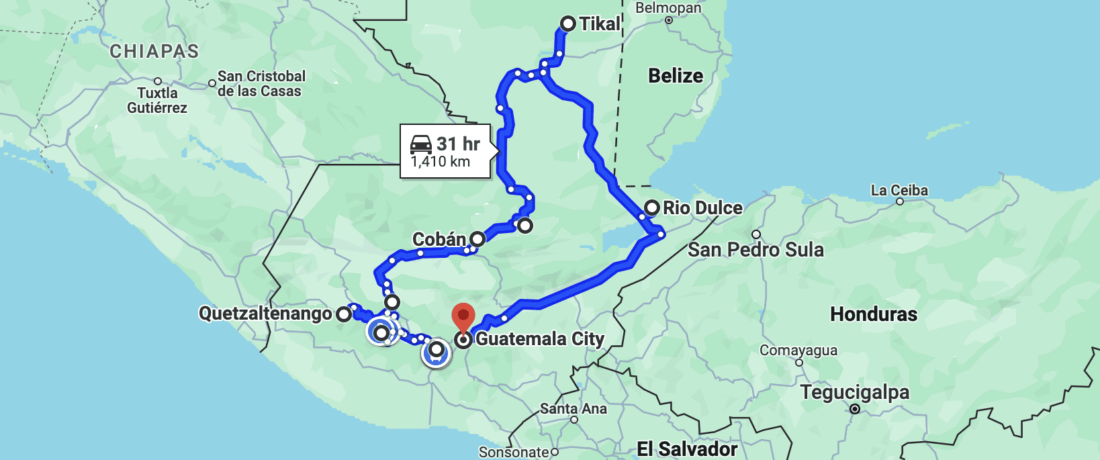Theraputic Massage in Lake Atitlan Resort
Pamper yourself with a theraputic massage at Los Elementos Day Spa. Enjoy a massage with th...
In this blog, we'll share insider knowledge about Guatemala's best backpacking options, offering a 3-week itinerary that includes all of Guatemala's top sights and experiences like Antigua, Lago de Atitlán, Semuc Champey, Tikal & more.
Guatemala with its rich history, diverse landscapes, and vibrant culture offers an unforgettable experience for backpackers. From the colonial charm of Antigua to the breathtaking beauty of Lake Atitlán and the ancient wonders of Tikal. Whether you're seeking adventure, awesome landscapes, or cultural heritage, you have plenty of trails to choose from.

This comprehensive itinerary guides backpackers through the captivating highlights of Guatemala, from the cultural hub of Antigua to the ancient wonders of Tikal and the tranquil beauty of Lake Atitlán, offering a well-rounded exploration of the country's diverse offerings.
Following this itinerary will take you to the most popular villages and attractions, and will also get you well off the beaten path for some unique experiences and high adventure.
Days 1-5: Antigua
Days 6 to 10: Lago de Atitlán
Days 11-13: Quetzaltenango
Day 14: Chichicastenango
Day 15: Coban & Alta Verapaz
Day 16: Lanquin & Semuc Champey
Day 17-18: Tikal & Yahxá
Day 19-20: Rio Dulce
Day 21: End in Guatemala City, or on to Belize
The first days of your Guatemala backpacking adventure are best spent exploring the enchanting streets of Antigua, uncovering the city's historical and cultural treasures while acclimating to the vibrant atmosphere. The UNESCO world heritage site is only 6 blocks square, making it easy to navigate, but packed into that small space are 33 historic churches, monestaries, convents, and government buildings. Many of them are in ruins, and give you a sense of Indian Jones excitement as you wonder through the fallen columns and enter the crypts in the incredible ruins. Some have been rebuild to their former colonial glory.
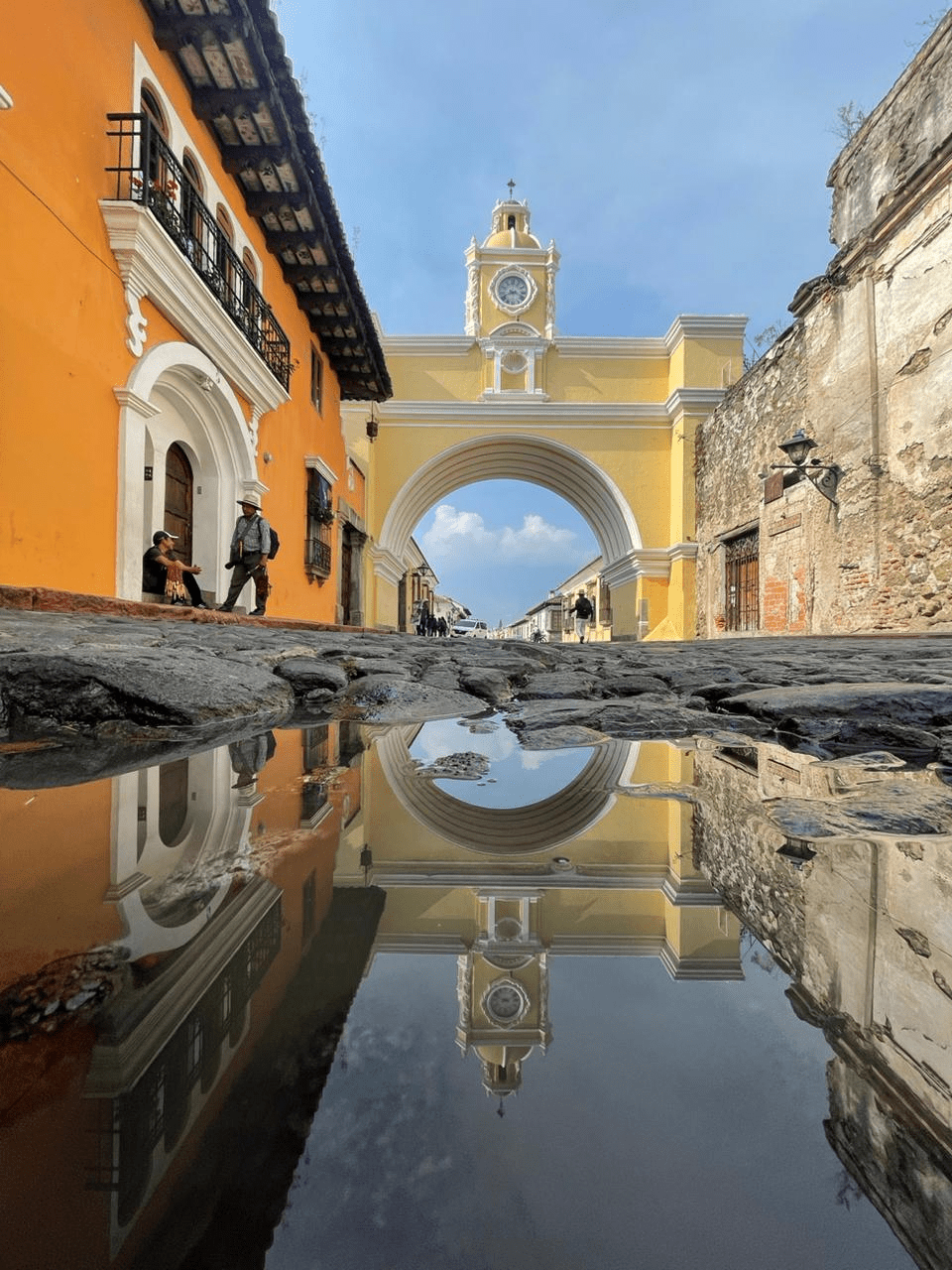
After you spend a day learning about the history and architecture you'll be ready for a meal and drink. Antigua is a gastronomic treasure with food from all around the world. Sample local recipes and street food at the mercado, or in front of the Iglesia de la Merced. Upscale versions can be found at La Cuevita de los Urquizú or La Fonda de la Calle Real. There are countless cafes and restaurants offering international dishes. No matter what country you hail from, you are likely to find a restaurant offering your favorite comfort food.
During your time in Antigua you can't miss out on the once-in-a-lifetime Acatenango volcano hike. This exhilarating challenge will reward you with breathtaking views of the neighboring Fuego volcano as it actively erupts at a safe distance, spewing lava and releasing huge clouds of smoke.
Hiking the Acatenango Volcano offers a two-day experience like no other (yes, this hike includes one compulsory night of camping). From the 3,976-meter summit (13,041 feet), jaw-dropping views of neighboring Fuego await you. But this is no ordinary mountain view. Fuego is an actively erupting volcano with lava spewing every 10 minutes, all of which you can observe from a safe viewing distance at the base camp of Acatenango. It's one for the bucket list!
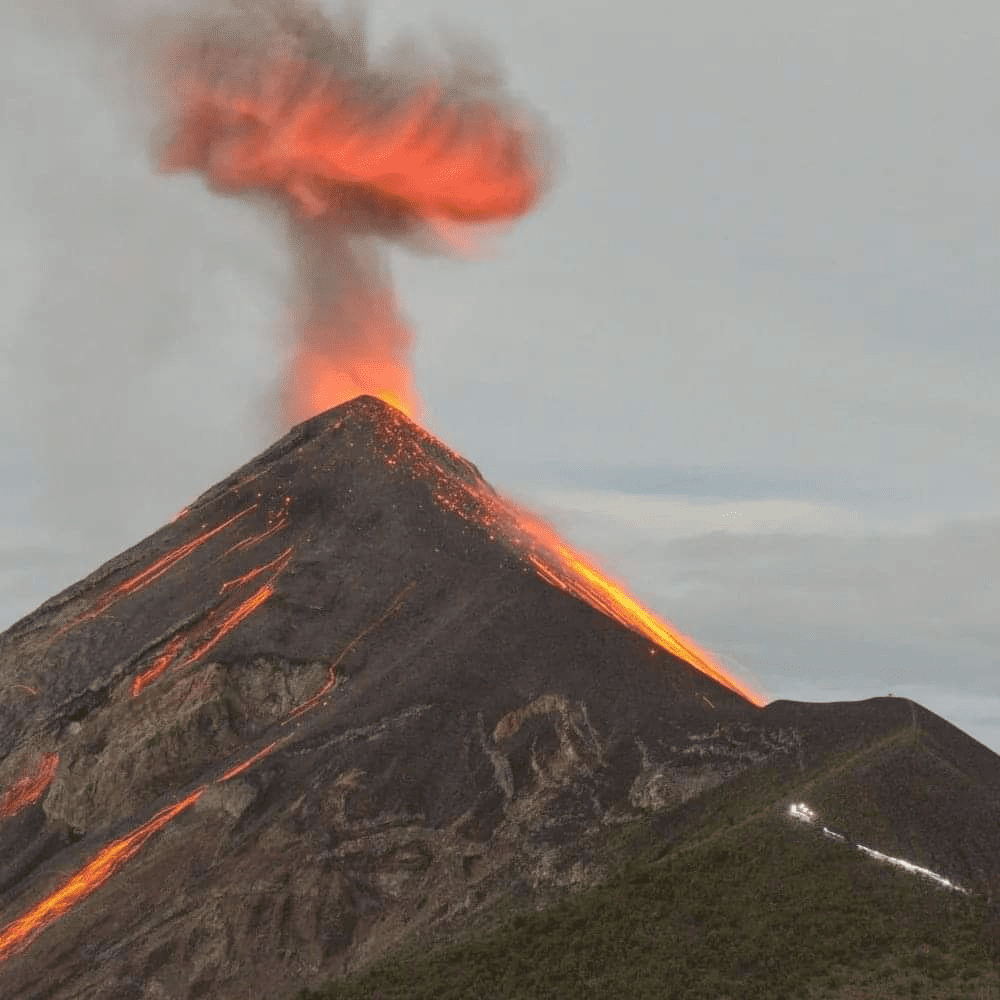
When hiking Acatenango, you have the additional option to hike Volcan Fuego. We highly recommend taking this since the additional cost is marginal (maybe 200Q depending on the tour company) and getting that bit closer to the eruptions offers a once-in-a-lifetime opportunity.
From the trailhead, the trek to reach the summit takes about 4-6 hours while traversing around 18 kilometers (11 miles) roundtrip in total. Temperatures here drop extremely low during sunrise so packing warm clothing is essential.
The optimum time to go on this hike is between November and April as it gives greater chances of staying dry amidst breathtaking landscapes. It’s required that you hike Acatenango & Fuego with a guide, so check out the Acatenango hiking tour with Kayak Guatemala
As far as accommodation, Antigua presents backpackers with a range of accommodation options, from charming hostels to boutique hotels, ensuring a comfortable and convenient stay while exploring the city's many attractions.
The journey from Antigua to Lake Atitlán is much more than a boring bus journey, it's an opportunity to witness the stunning landscapes of Guatemala, setting the stage for the natural and cultural wonders that await at the lake.
Taking a shared shuttle bus is the best option, with travel time between 2.5-3 hours between Antigua and Panajachel, Lake Atitlán. The shuttle buses leave Antigua with the same schedule every day.
Tourist shuttle services can be found with almost all tour companies in Antigua and often offer hotel pickup for your convenience. Shuttle service can be found through hotels or through tour agencies and they are a safe, quick, and cost-effective mode of transportation from Antigua to Lake Atitlan. The shared shuttle service between Antigua and Lake Atitlán typically costs about $20 or Q150 one-way.

The final destination of the tourist shuttle will be Panajachel, one of the only towns on Lake Atitlán with road access. In Panajachel, you will be greeted by amazing views of the beautiful lake flanked by three volcanoes. There is no main bus station in Panajachel, so you will most likely be dropped off by the main dock. If you are staying in Panajachel, you can get a tuk-tuk to your accommodation location.
If you are staying in one of the other lake villages (San Pedro la Laguna, San Marcos la Laguna, Santa Cruz, la Laguna, San Juan la Laguna, etc) you can catch a public boat from the dock called Tzanjuyu (pronounced zan-hoo-you) for 25 quetzales. Your boat trip will be between 10 and 45 minutes, depending on which is your destination village.
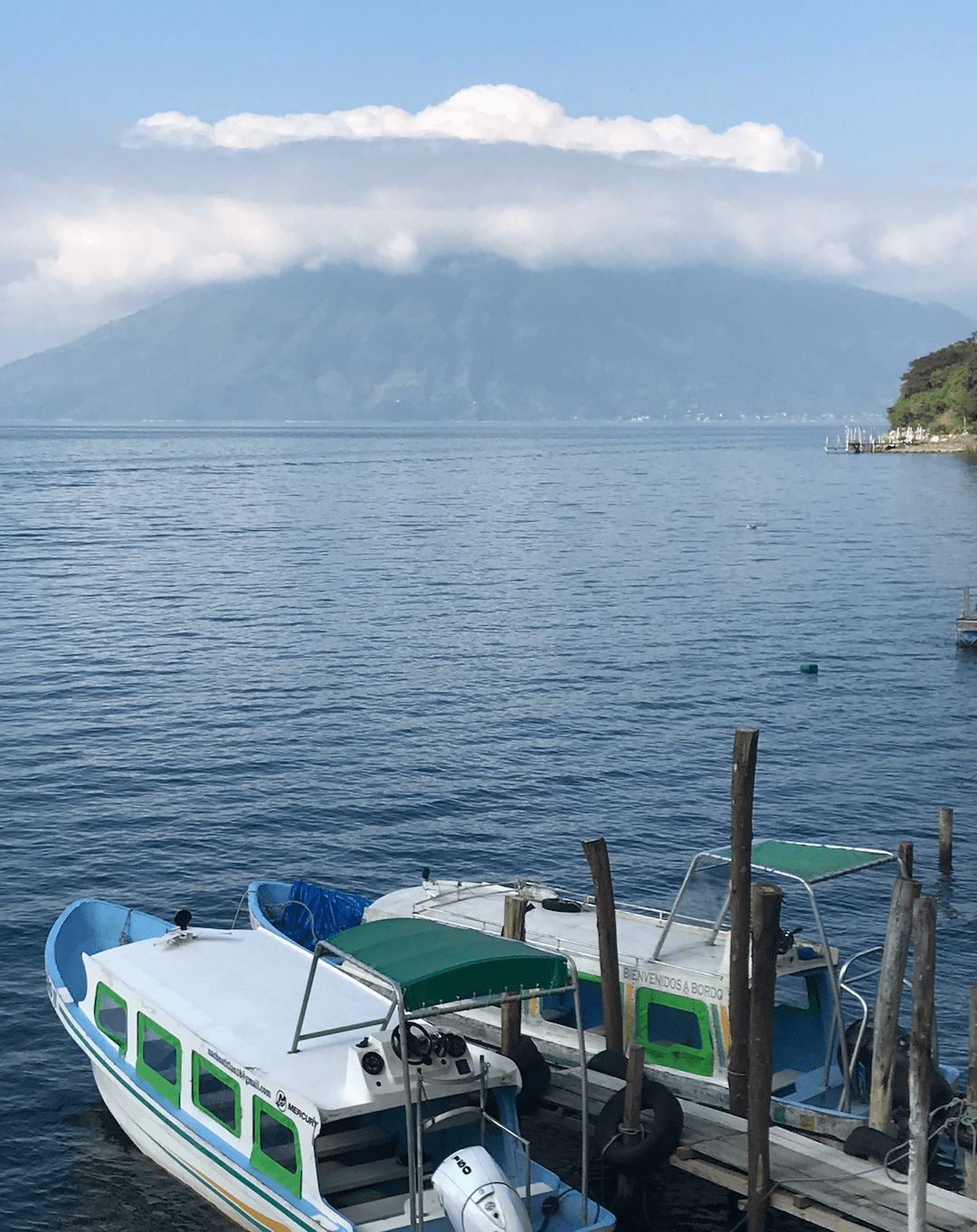
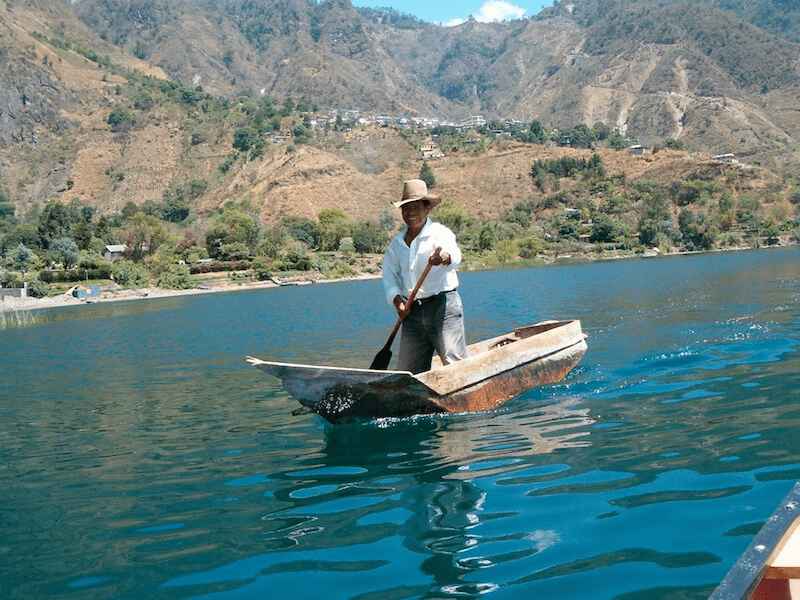
Nestled in the highlands of Guatemala, Lake Atitlan is a must-visit destination that will captivate you with its stunning natural beauty, rich cultural experiences, and diverse activities for all interests. Formed by the eruption of Los Chocoyos volcano 84,000 years ago, Lake Atitlan Guatemala is the deepest lake in Central America, reaching a maximum depth of 340 meters (1,120 feet).
With more than 90% of the people living around the lake being Maya descendants, you’ll have the unique opportunity to immerse yourself in this ancient culture while exploring the different towns and villages surrounding the breathtaking lake.
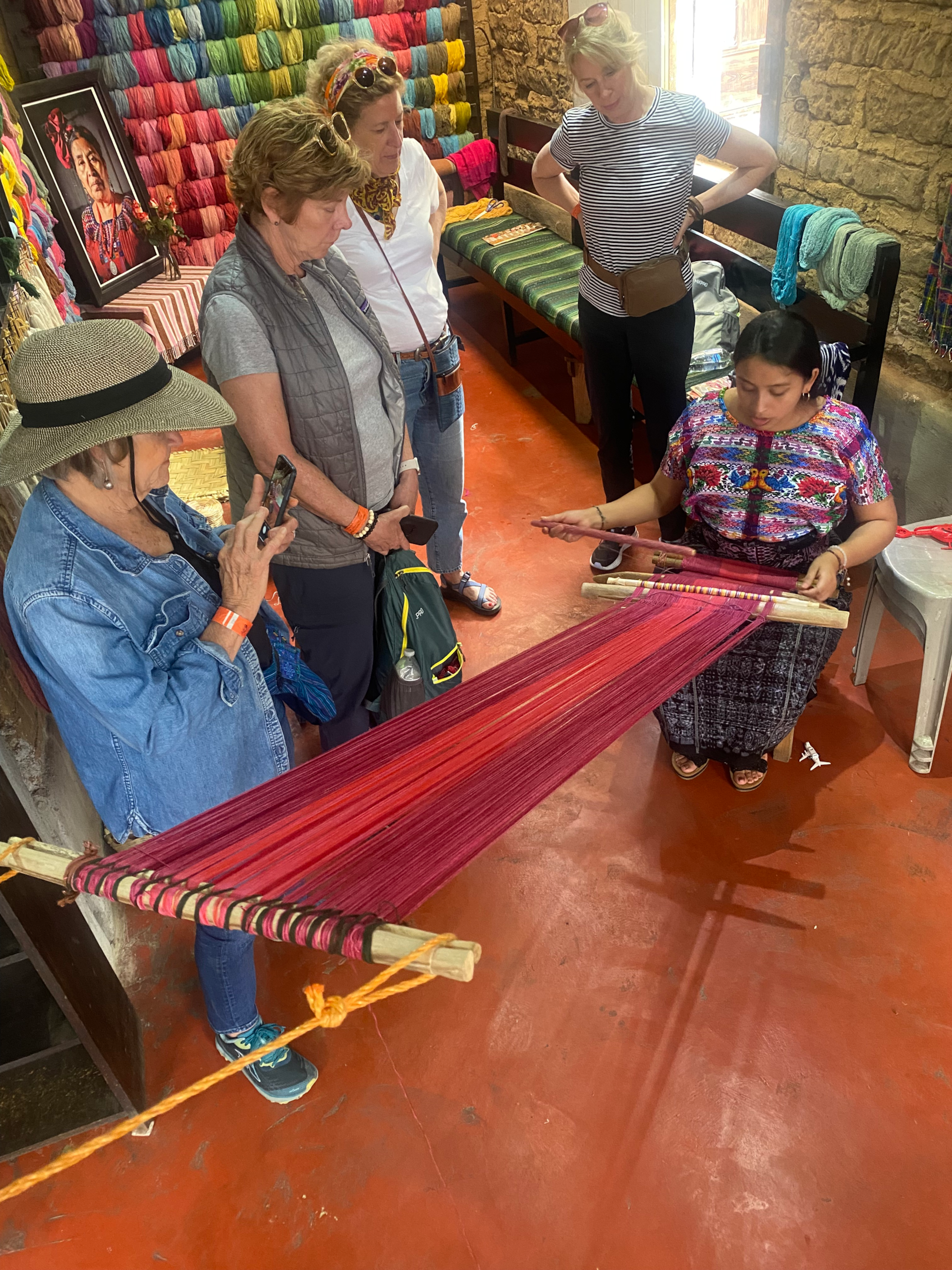
Each of the tiny villages along the lake shore has something unique to offer, so make sure to explore them with a day tour or work it into your travel plan to check them out on your own. A cultural tour of Lake Atitlán can provide you with unique experiences learning about Mayan traditions- ancient weaving techniques in San Juan, Mayan cooking classes in Santa Cruz, or ceramic workshops in San Antonio Palopó.
Alternatively, this full-day trip of Lake Atitlan takes you from one end of the lake to the other by boat with an English-speaking guide and walking tours in each village.
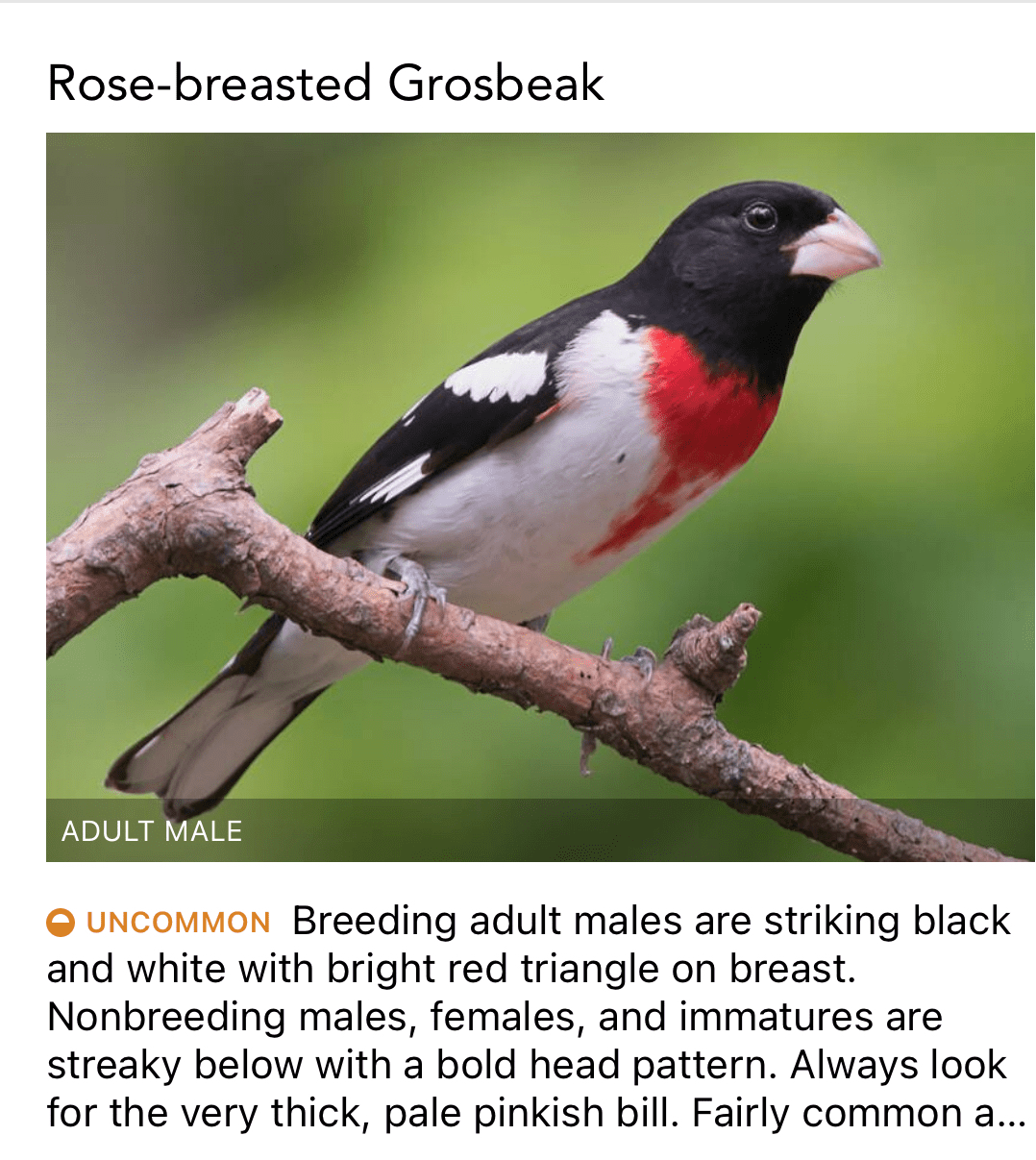
The natural beauty of Lake Atitlan is nothing short of awe-inspiring. With its turquoise-blue waters framed by lush mountains covered in avocado and coffee trees, it’s no wonder that Lake Atitlan was recognized by National Geographic as the most beautiful lake in the world. The diverse flora and fauna around Lake Atitlan further contribute to its enchanting allure.
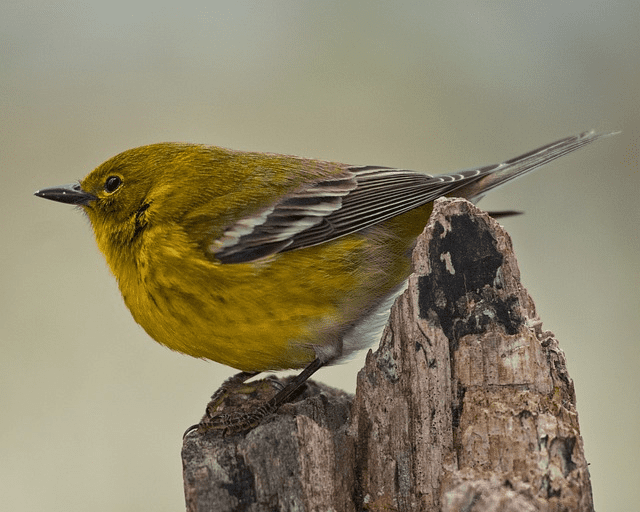
Lake Atitlan is a photographer's dream, with countless postcard-worthy lookout points and nature reserves with stunning vistas.
We recommend that you visit:
Atitlan Nature Reserve with its diverse flora and fauna, including unique plant species and exotic birds.
The panoramic views of Lake Atitlán and the surrounding volcanoes at Cerro Tzankujil Nature Reserve.
Tzantizotz Nature Reserve with its tranquil rivers, waterfalls, and natural water features.
Indian Nose (La Nariz) viewpoint, known for its spectacular sunrise and sunset views.
From heart-racing adventure sports to tranquil spiritual retreats, Lake Atitlan caters to a wide range of interests. Here are some activities you can enjoy when you visit Lake Atitlan:
Explore the lake’s many hiking trails and volcano treks such as the staggering 3,020m San Pedro Volcano.
Kayak, paddleboard, or swim in the inviting waters of the lake
Visit San Marcos La Laguna, known as the “hippie town,” for yoga retreats, meditation centers, and alternative therapies
No matter your interests, there’s an abundance of activities to choose from, ensuring that your Lake Atitlan adventure is truly unforgettable. Whether you’re shopping for local handicrafts, taking a cooking class, or simply soaking up the stunning views while sipping a cocktail, Lake Atitlan has it all.
Lake Atitlan is incredibly unique thanks to its population of majority indigenous people. The town is home to several Mayan communities, most notably the Tz'utujil and Kaqchikel people, so visiting the area offers countless opportunities to learn about these unique cultures.
Each town and village around the lake offers unique traditions and attractions that showcase the rich heritage of the Maya people. Learn how to cook authentic local dishes like Pepian de Pollo (commonly referred to as Guatemala's national dish) at a cooking class, or watch how women create intricate and colorful textiles from hand-woven threads on a tour of San Juan la Laguna.
For a truly authentic experience, you can participate in a traditional Mayan ceremony at the Sacred Caves of Lake Atitlan where you’ll learn about the importance of the Mayan calendar, hike to a 200 ft waterfall, and witness the mesmerizing ‘Fire Cleansing and Protection’ ceremony performed by shamans.
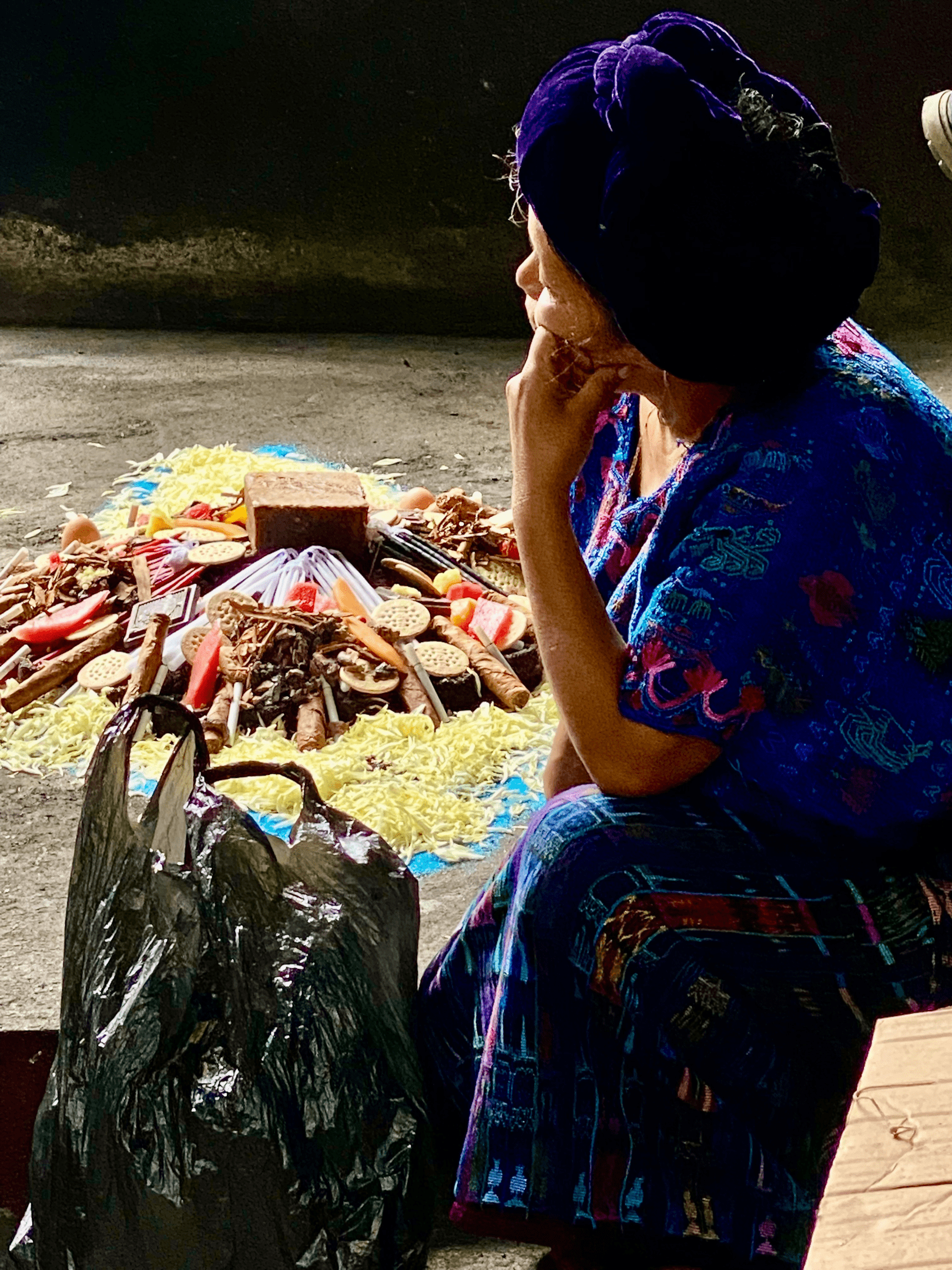
Each of the towns and villages around the lake offer a unique glimpse into the local life, with bustling markets, vibrant festivals, and opportunities to engage with the local community. And each village is different from the next, so be sure to visit a few different towns to get the full experience.
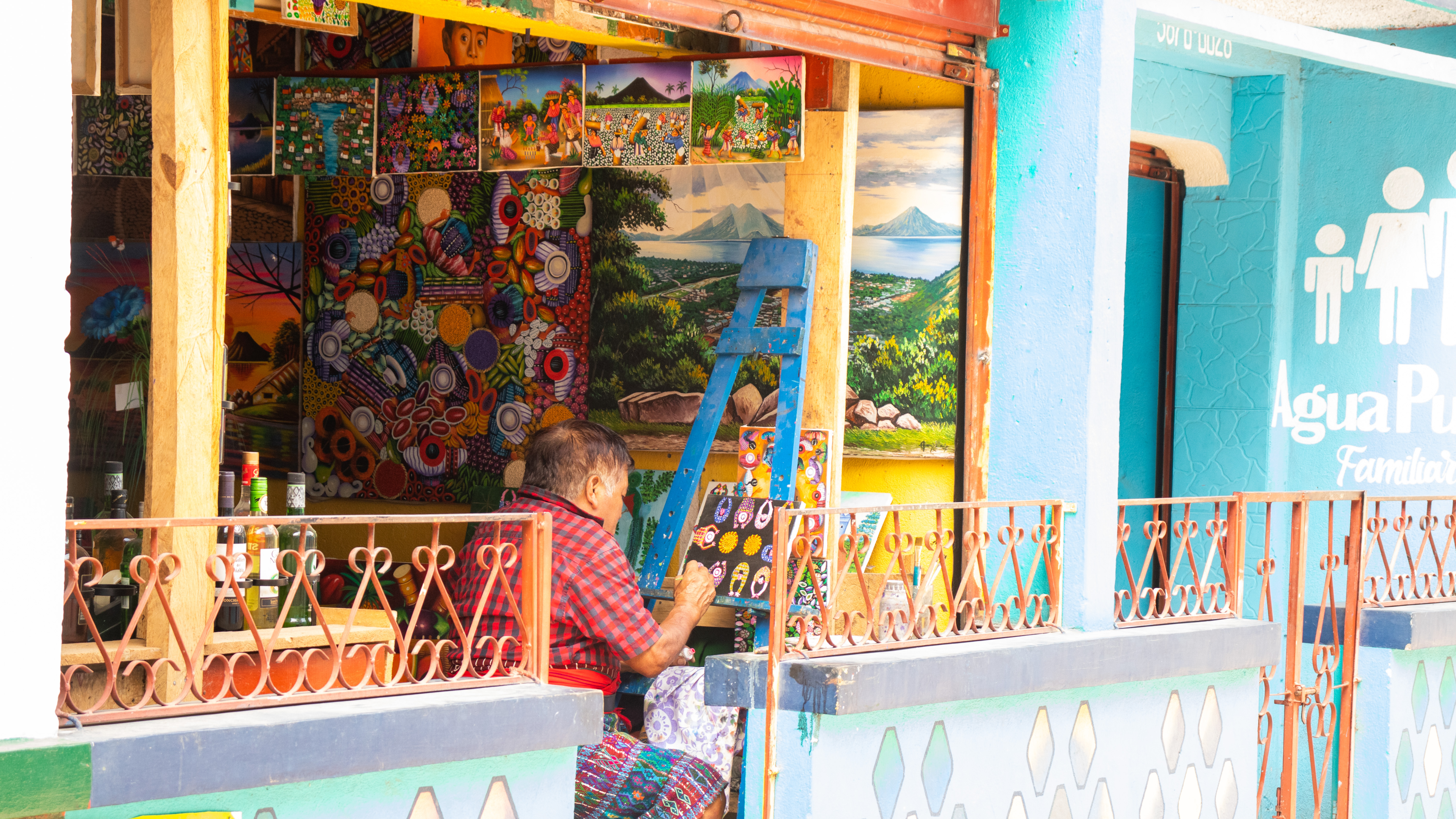
It's easy to explore the various towns and villages that surround the lake on your own, or you can take a deeper dive with a local guide. A tour to San Marcos, San Juan, and Santiago with a local guide will give you an understanding of the variety. Some of the towns and villages to explore include:
Panajachel: the bustling gateway town
San Marcos: a peaceful, spiritual haven*
Santiago Atitlan: known for its indigenous culture and traditional Mayan practices
Santa Cruz: a tranquil village with stunning views of the lake
San Pedro: a popular backpacker destination with a vibrant nightlife
Panajachel, often referred to as the gateway to Lake Atitlan, is the main entry point for visitors and provides easy access to the other towns around the lake. As a well-developed town with plenty of resources for both locals and visitors, Panajachel is an ideal starting point for your Lake Atitlan adventure.
With its bustling main street, Calle Santander, Panajachel offers excellent shopping opportunities, including local handicrafts, textiles, and souvenirs. The town boasts a variety of bars and restaurants catering to all tastes and budgets, from traditional Guatemalan dishes to international cuisine. You’ll find plenty of delicious food options to satisfy your cravings.
Staying in Panajachel for a night or two allows you to take advantage of the numerous transportation options, making it easy to plan day trips and discover the unique experiences that await you around Lake Atitlan.
San Pedro La Laguna, often referred to as a backpacker’s paradise, is a popular destination for budget travelers due to its affordable accommodations, lively nightlife, and a range of outdoor activities. San Pedro is the perfect place to make new friends from around the world.

During the day, you can explore the town’s colorful markets, take a horseback ride, sample local street food, or even visit a coffee plantation for a taste of the local agricultural scene. As the sun sets, San Pedro’s nightlife comes alive, with numerous bars and clubs offering a mix of local and international music.
If you’re looking for a more active experience, San Pedro also offers a variety of outdoor activities to suit every adventure seeker. From hiking the nearby San Pedro volcano to kayaking and paddleboarding on the lake, there’s no shortage of thrilling experiences in this vibrant backpacker haven.
For those seeking a more tranquil and introspective experience, San Marcos La Laguna is the perfect destination. Known for its spiritual and wellness-focused atmosphere, this peaceful village offers yoga retreats, meditation centers, and alternative therapies that cater to visitors looking for personal growth and relaxation.
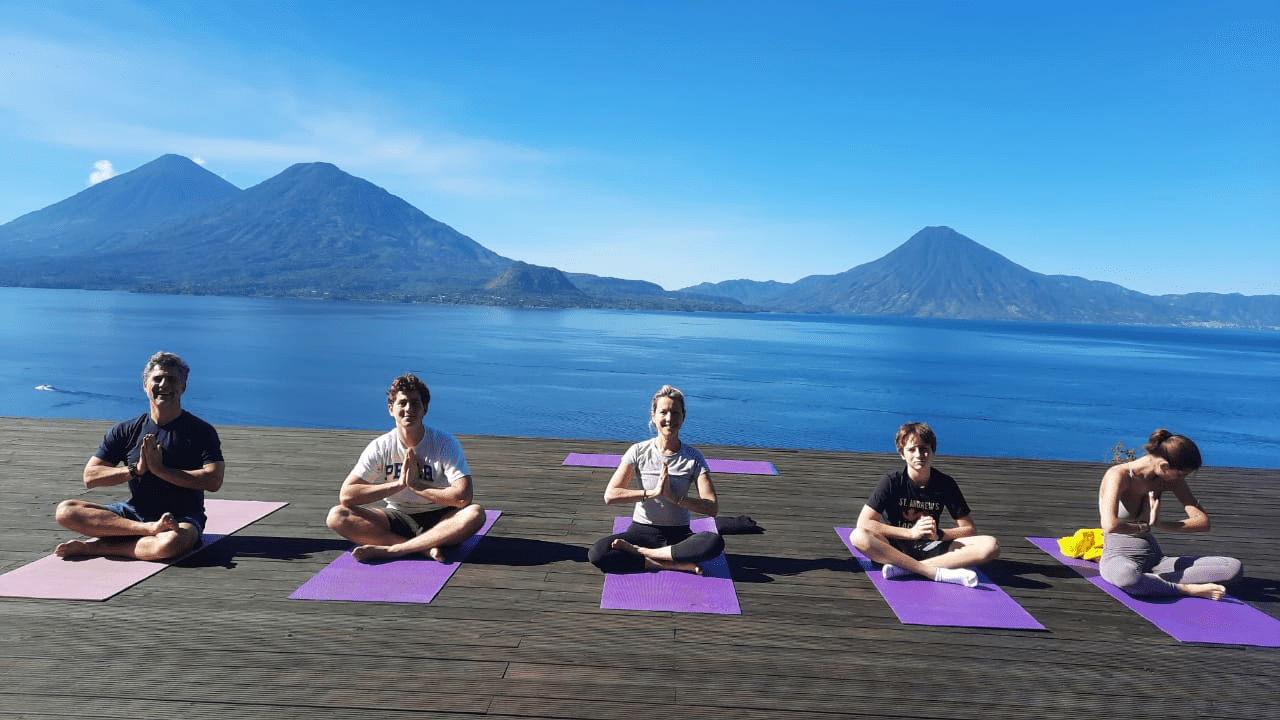
In addition to its serene ambiance, San Marcos is also home to a thriving community of artists, healers, and spiritual seekers, making it the ideal place to connect with like-minded individuals. Whether you’re interested in attending a cacao ceremony, exploring permaculture and organic farming, or simply relaxing in a peaceful setting, San Marcos provides the perfect setting for a restorative and transformative experience.
Santa Cruz La Laguna is a picturesque town that offers arguably the most stunning views of the lake, a strong sense of local culture, and opportunities to engage with the community. This charming village is perfect for those looking to experience the authentic local lifestyle while taking in the breathtaking scenic beauty that Lake Atitlan has to offer.

As you explore Santa Cruz, be sure to:
Visit local non-profit Amigos de Santa Cruz, where you can shop for unique handicrafts and sample delicious local cuisine at their Cafe Sabor Cruceño.
Participate in community projects and workshops to learn new skills and contribute to local well-being with community guide cooperative, Santa Cruz Jo.
Learn traditional weaving, beading, and local recipes in a cooking class.
Rent a kayak or paddleboard, or experience a Kayak & Cliff Jump adventure with a local guide.
Quetzaltenango, also known as Xela, offers several attractions for backpackers. Before the conquest, Quetzaltenango had been the capital of a K’iche’ kingdom known as Xelajú, now shortened to Xela. Xela is situated at a lofty 7,656 feet (2,334 metres) above sea level, and surrounded by volcanos reaching much higher.
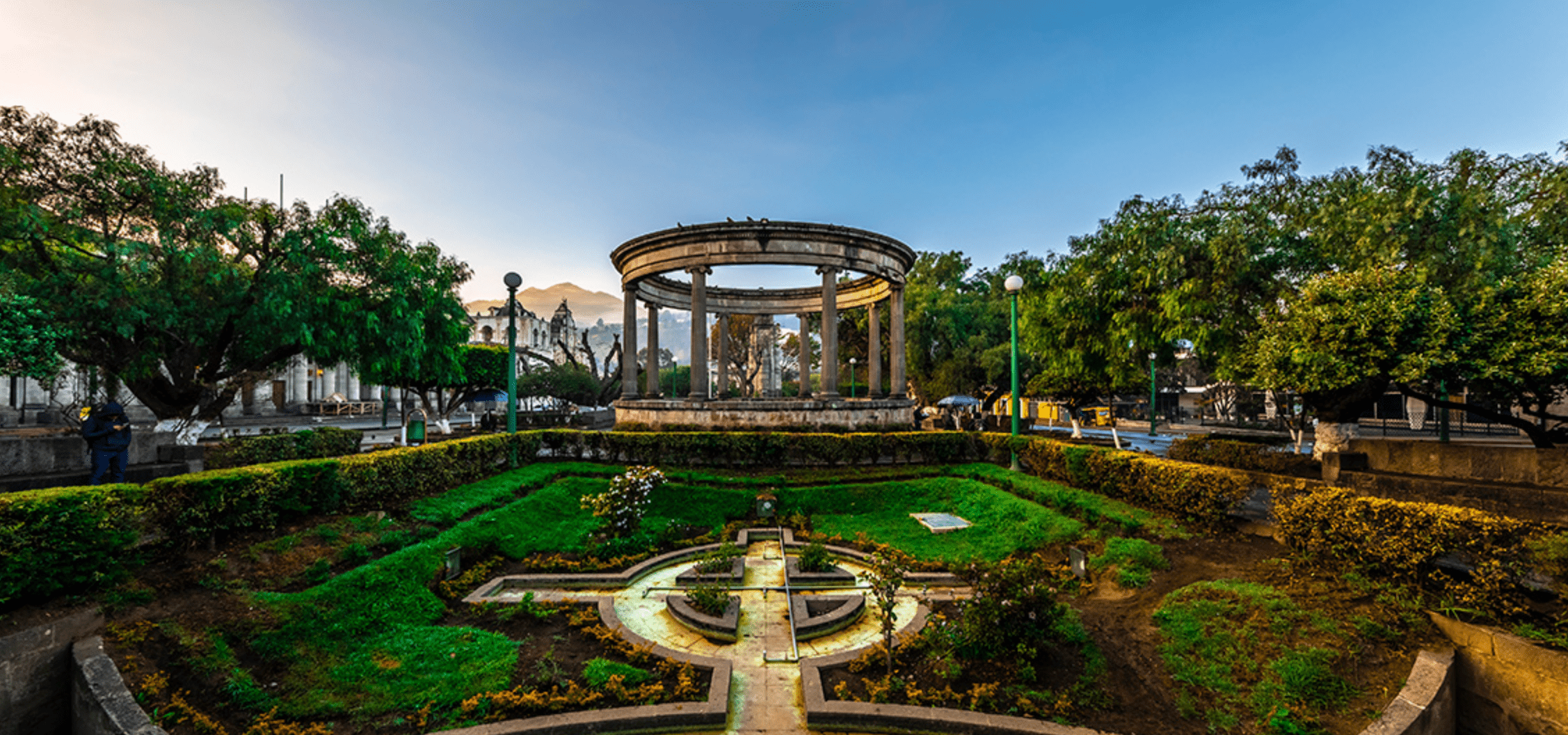
First, for historic sights, you can visit the majestic Iglesia del Espíritu Santo, an iconic yellow church with stunning architecture. The Parque Centro América is a great place to soak in local culture and observe the daily life of the city. Additionally, the Municipal Theater offers a glimpse into the city's cultural heritage with occasional performances and events.
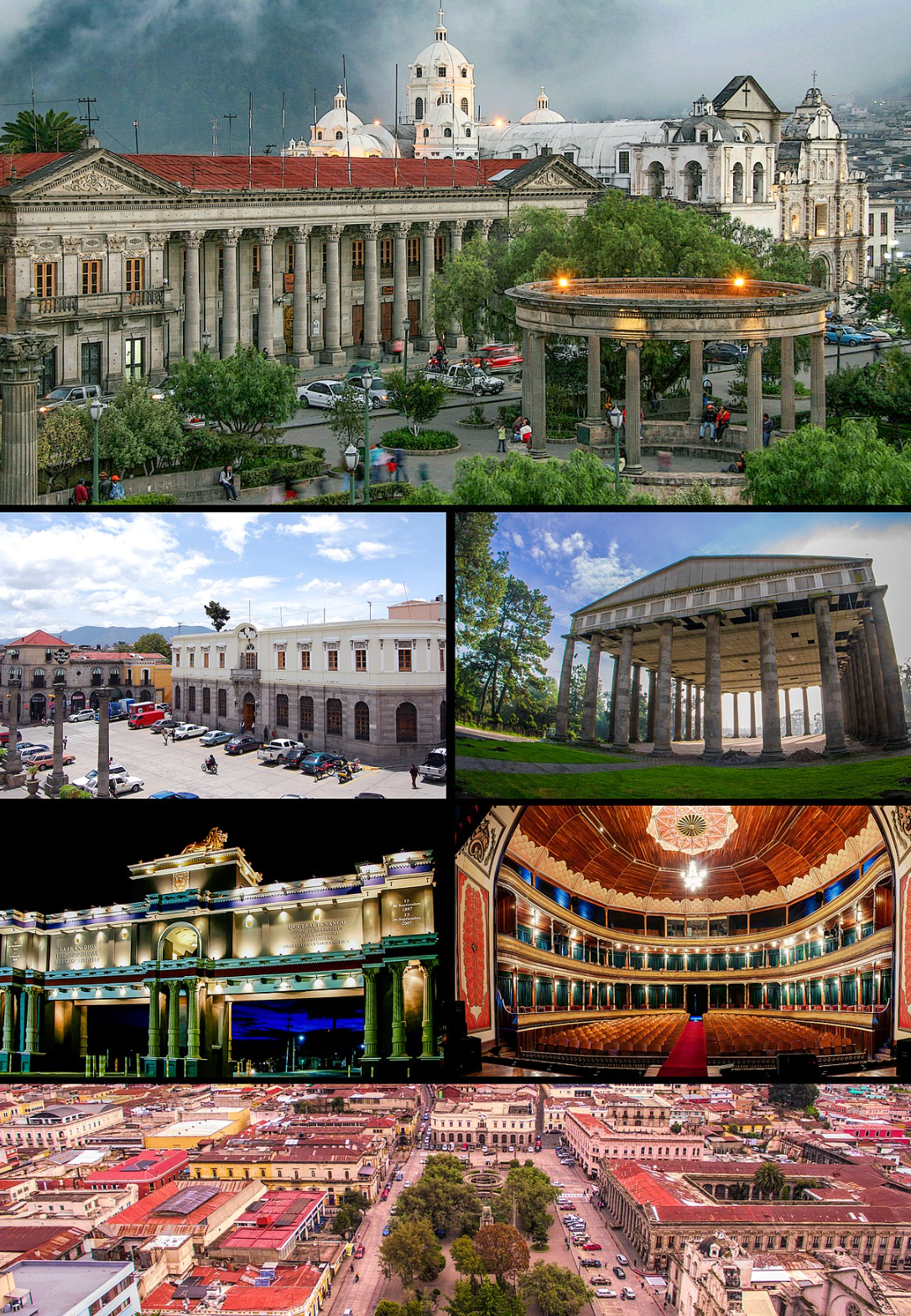
The architecture in historic Xela is predominantly Greek Revival and Neoclassical rather than the Spanish Baroque style found in Antigua. This is due to the fact that Quetzaltenango was largely destroyed by a volcano fuego erupting in 1902. The coffee trade was booming at this time, and the finca owners and merchant trade was largely German and Italian. As a result, the city was rebuild using Germain and Italian architects.
When it comes to dining and nightlife, the city offers a variety of restaurants and bars. For a taste of local cuisine, head to the Mercado Minerva, where you can find authentic Guatemalan dishes. In the evening, explore the lively bar scene around the Parque Central, where you can find a mix of traditional cantinas and modern bars to unwind after a day of exploration.
For backpackers seeking to enhance their cultural experience, Quetzaltenango, or Xela, offers the perfect setting to learn Spanish and immerse in the local language and traditions, creating a deeper connection with Guatemala.
As for accommodation, Quetzaltenango has a range of options for backpackers. Hostels like Casa Seibel and Casa Renaissance offer affordable and comfortable stays with opportunities to meet fellow travelers. If you're looking for a more upscale experience, hotels like Hotel Modelo or Hotel Casa Quetzaltenango provide a cozy and convenient base for your adventures in the city.
Chichicastenango is a quaint Mayan village famous for its market on Thursdays and Sundays, where traditionally dressed villagers in a kaleidoscope of colors come to sell their very colorful textiles, fruits, vegetables, flowers, handicrafts, food, pottery, wooden boxes, condiments, medicinal plants, candles, pom and copal (traditional incense), cal (lime stones for preparing tortillas), grindstones, pigs and chickens, machetes, and other tools. In the central part of the market plaza are small eateries (comedores).
Although parts of the market a very commercial, there is much mysticism in the air. You will be amazed by the religious blend that exists, where colonial Spanish Catholicism, modern evangelism and ancient Mayan tradition, blend in a uniquely harmonious fashion. There is something deeply moving about watching a Mayan Indian or shaman, engulfed by incense and surrounded by flowers, praying to a catholic God and at the same time practicing ancient Mayan rituals, all in an old Spanish colonial Cathedral.
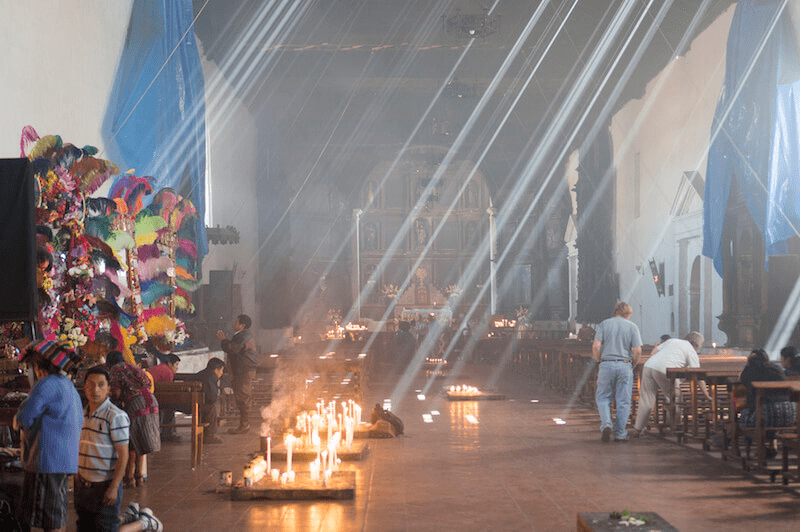
Visit the colorful cemetery, the modern sculpture garden dedicated to the Mayan calendar cycles, the indigenous mayor’s office, and the sacred hill Pascual Abaj. Each December 21 is the festival “feria” of Santo Tomás, the patron saint of Chichicastenango. The days leading up to December 21 local dancers perform the Palo Volador.
The next travel segment is any backpackers dream, truly off the beaten path yet easy enough for any savvy traveler to accomplish. Plan on a full day of travel. The route from Chichicastenango to Coban and Alta Verapaz offers a scenic journey through Guatemala's highlands, showcasing the country's natural beauty and cultural diversity. Starting from Chichicastenango, the road winds through picturesque landscapes, passing through the charming town of Santa Cruz del Quiche. Here, you can explore the historic Spanish colonial architecture and visit the local market to experience the indigenous culture firsthand.
Continuing the journey, the route takes you through Uspantan, a town surrounded by lush greenery and steep mountains. This area is known for its coffee plantations, providing a serene and picturesque backdrop for travelers. You can take a break to enjoy the local coffee and immerse yourself in the tranquil ambiance before heading towards Coban and Alta Verapaz.
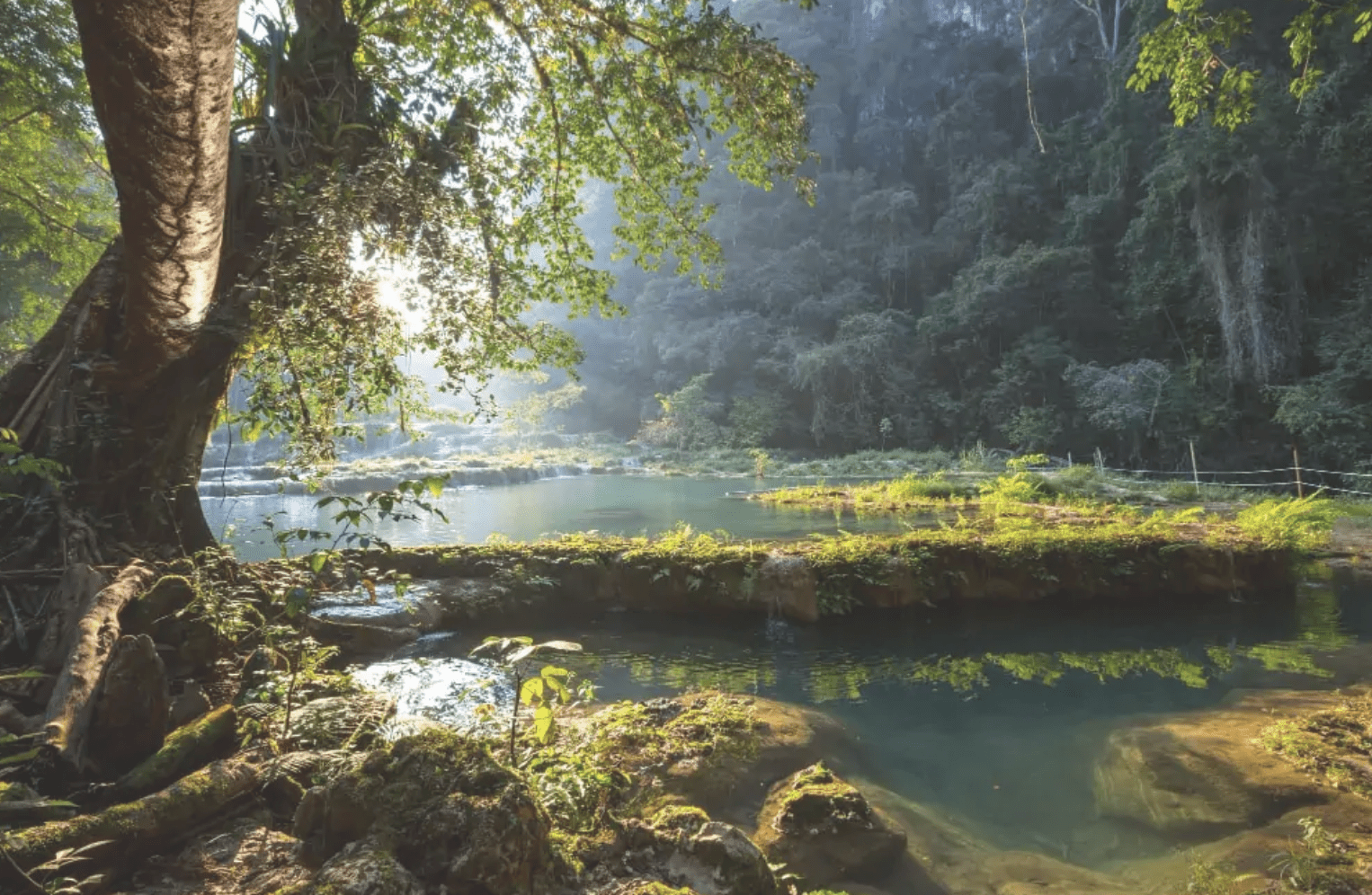
As you approach Coban and Alta Verapaz, the landscape transforms into a luscious, tropical paradise with dense forests and cascading waterfalls. This region is a gateway to ecotourism and adventure, offering opportunities for hiking, birdwatching, and exploring the rich biodiversity of the area. The journey from Chichicastenango to Coban and Alta Verapaz is not just a drive; it's an immersive experience that showcases the diverse beauty of Guatemala's landscapes and cultures.
If you are on a more relaxed schedule, you can end your days journey and stay the night in Coban. If you need to stick to the schedule outlined in this itinerary, then continue on beyond Coban to Lanquin, an additional 90 - 120 minutes ride.
Semuc Champey and the nearby town of Lanquin are a paradise, offering a perfect blend of adventure and natural beauty. The main attraction, Semuc Champey, is a series of stunning turquoise limestone pools formed by the Cahabón River. Backpackers flock here to swim, relax, and soak in the breathtaking natural scenery. The area also boasts lush tropical forests and impressive cave systems, making it an ideal destination for nature enthusiasts and adventure seekers.

One of the must-do activities in the area is the cave tour, which involves exploring the K'anba Caves by candlelight. This thrilling adventure includes swimming, climbing, and wading through underground rivers and chambers. The experience is both exhilarating and awe-inspiring, making it a highlight for backpackers looking for an adrenaline rush and a unique exploration of Guatemala's natural wonders.
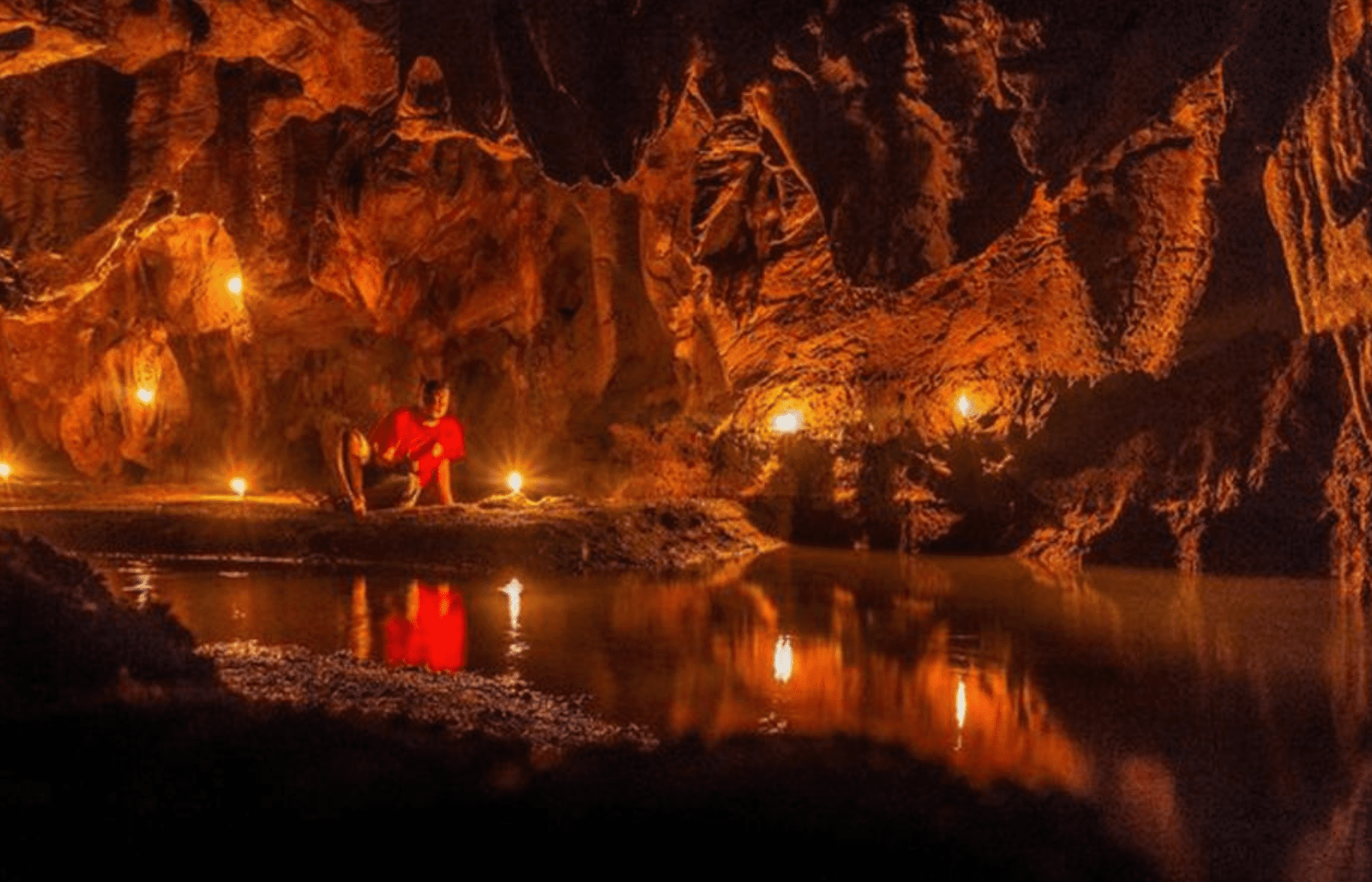
For a more leisurely yet equally enjoyable experience, tubing down the Cahabón River is a popular activity in Lanquin. Travelers can rent inner tubes and float along the gentle currents in turquoise pools, surrounded by the lush jungle and serene landscapes. It's a fantastic way to unwind and take in the tranquility of the area while enjoying a refreshing and scenic journey.

Accommodations in Lanquin cater to backpackers with a range of options, including budget-friendly hostels and eco-lodges nestled in the heart of nature. These accommodations offer a laid-back, communal atmosphere, perfect for meeting fellow travelers and sharing experiences. Many places also organize group activities and excursions, making it easy for backpackers to connect and explore the area together.
Plan on another full travel day as you leave Lanquin and head to Flores and/or Tikal national park. Check with your hostel or lodge for departure times and to book a ticket on a shuttle.
Tikal and Yaxhá are two iconic Mayan archaeological sites that beckon backpackers with their rich history, majestic ruins, and immersive cultural experiences. Located in the heart of the Petén region, Tikal is a UNESCO World Heritage site and one of the largest and most impressive Mayan cities, offering an awe-inspiring glimpse into ancient civilization. Backpackers are drawn to Tikal for its towering pyramids, intricate stone carvings, and the chance to climb to the top of the temples for breathtaking views of the surrounding jungle. The site also boasts abundant wildlife, allowing travelers to encounter howler monkeys, toucans, and other exotic species amid the ruins.
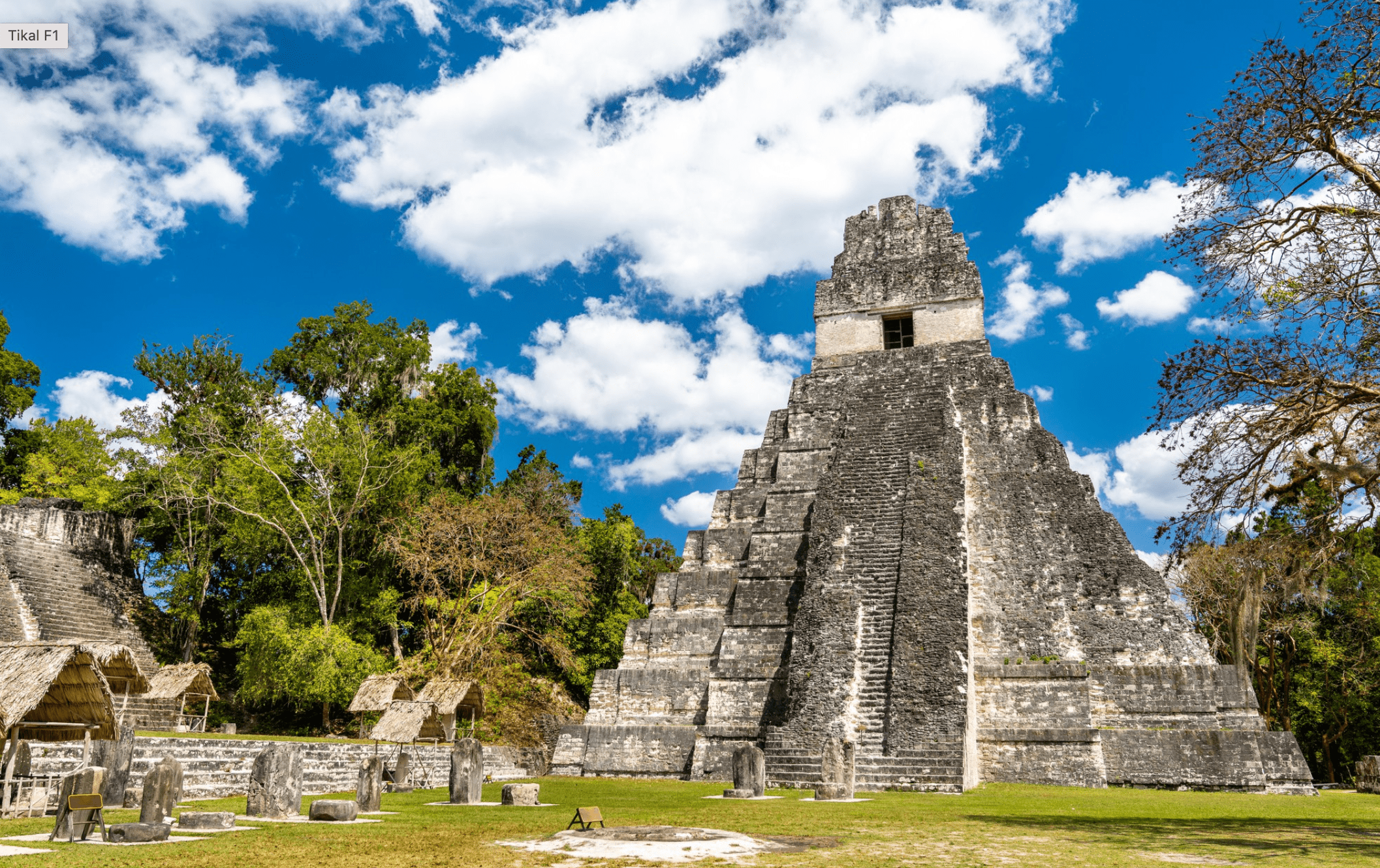
Yaxhá, another significant Mayan site nearby, offers a more off-the-beaten-path experience for backpackers seeking a deeper connection with history. The site encompasses impressive temple complexes, plazas, and ball courts set amidst the jungle, creating a sense of adventure and discovery. Yaxhá's serene ambiance and fewer crowds provide an opportunity for backpackers to explore the ancient structures at their own pace and immerse themselves in the mystique of the Mayan civilization.
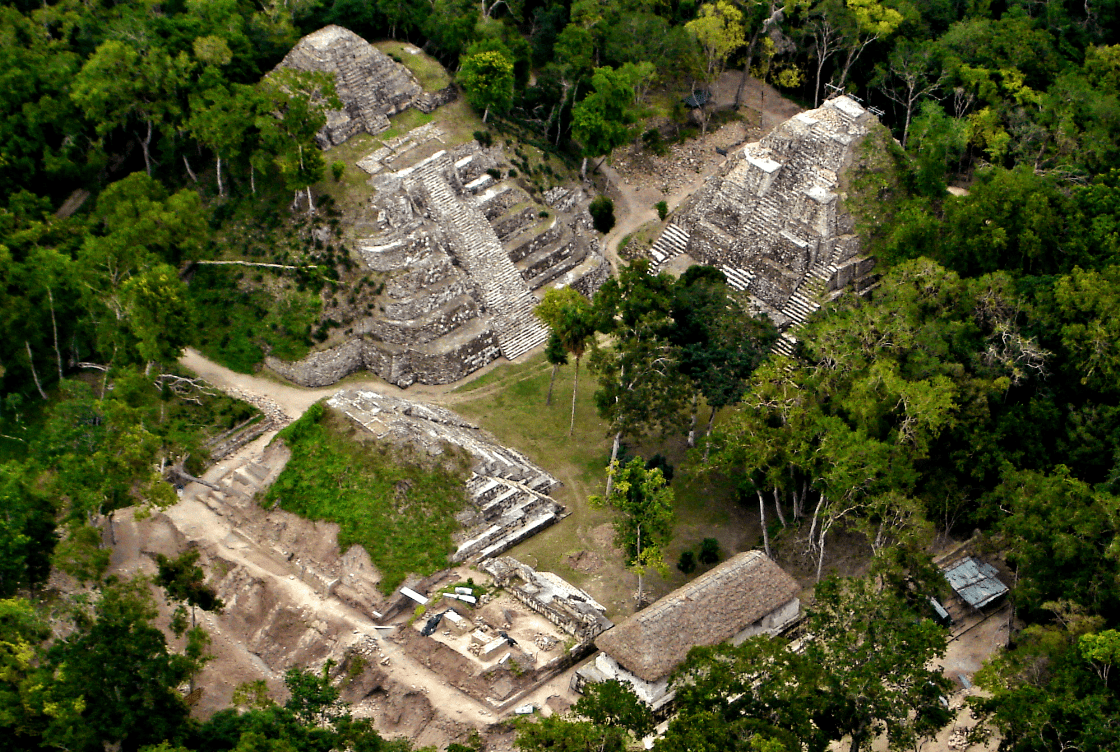
Accommodations near Tikal and Yaxhá cater to backpackers with a range of options, including eco-lodges, jungle camps, and budget-friendly hostels. These lodgings often offer guided tours, cultural activities, and opportunities to connect with local communities, providing a holistic and immersive experience.
Travelers can also partake in activities such as birdwatching, nature hikes, and stargazing, making the region an ideal destination for backpackers seeking a blend of adventure, cultural exploration, and natural beauty.
Booking a Tikal tour in advance is recommended to secure a seamless experience and ensure access to this iconic archaeological site, allowing backpackers to fully immerse themselves in its historical significance. This is more important if you don't speak Spanish and want an English, German, or French speaking guide. The best bilingual guides are in high demand an book up well in advance.
Rio Dulce, Guatemala, offers an enticing array of activities and experiences for backpackers looking to immerse themselves in nature, culture, and adventure. Over the course of two days, travelers can explore this beautiful region, known for its lush landscapes, winding river, and vibrant local life.
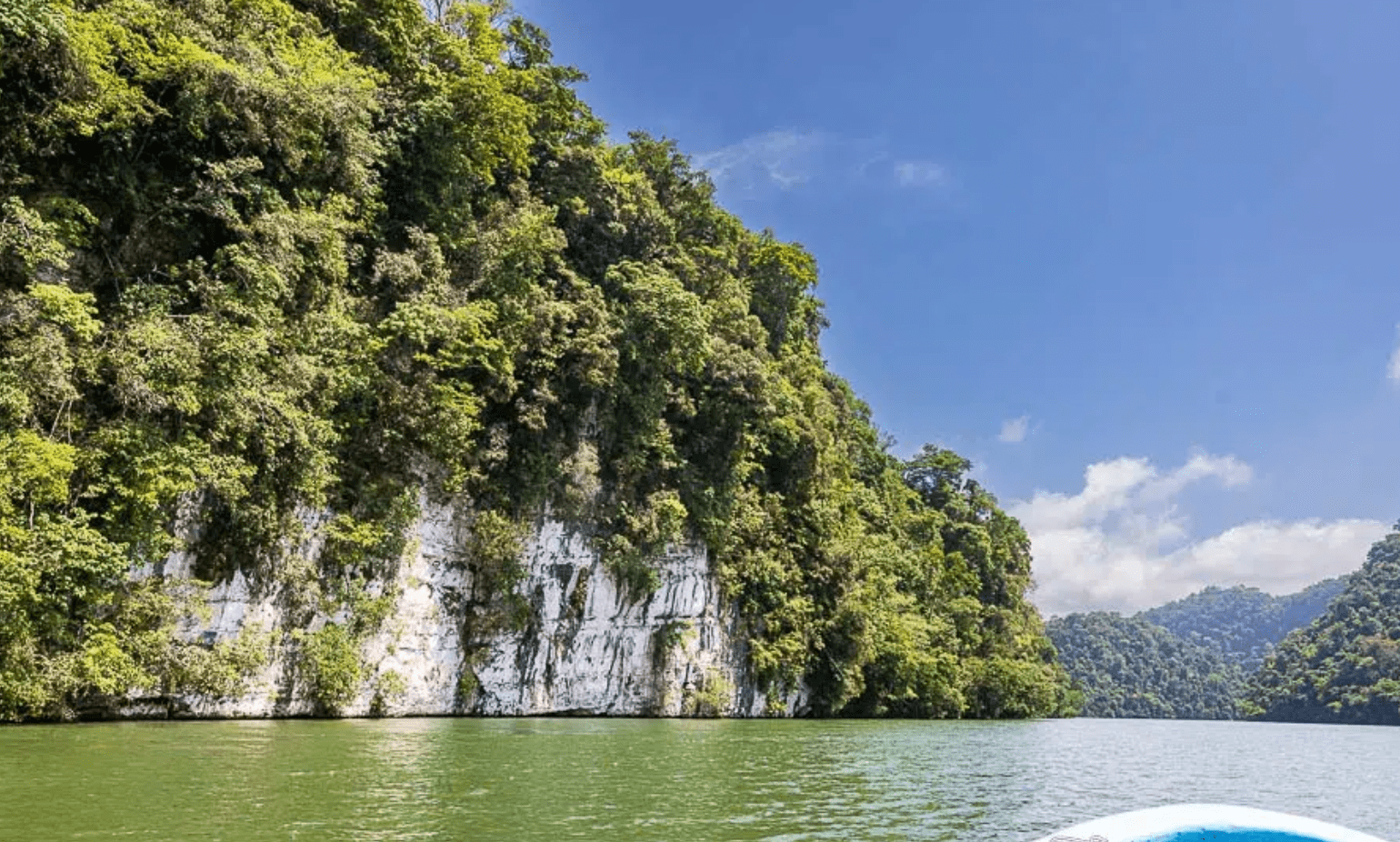
On the first day, backpackers can start by taking a boat tour along the Rio Dulce to the Caribbean coast, marveling at the picturesque scenery and spotting diverse bird species as they glide through the tranquil waters. The boat ride can include a visit to the scenic El Boquerón canyon, where the river cuts through towering limestone cliffs, creating a dramatic natural spectacle. Travelers can also make a stop at the hot springs of Finca Paraiso, where they can relax and unwind in the rejuvenating thermal waters, surrounded by tropical vegetation.

For an authentic cultural experience, backpackers can visit the Caribbean coast town of Livingston, accessible by boat from Rio Dulce. This Afro-Caribbean community offers a vibrant blend of Garifuna culture, music, and cuisine, providing an opportunity to savor local delicacies and immerse oneself in the rhythms of traditional Garifuna music and dance. The Caribbean beaches near Livingston are absolutely stunning.
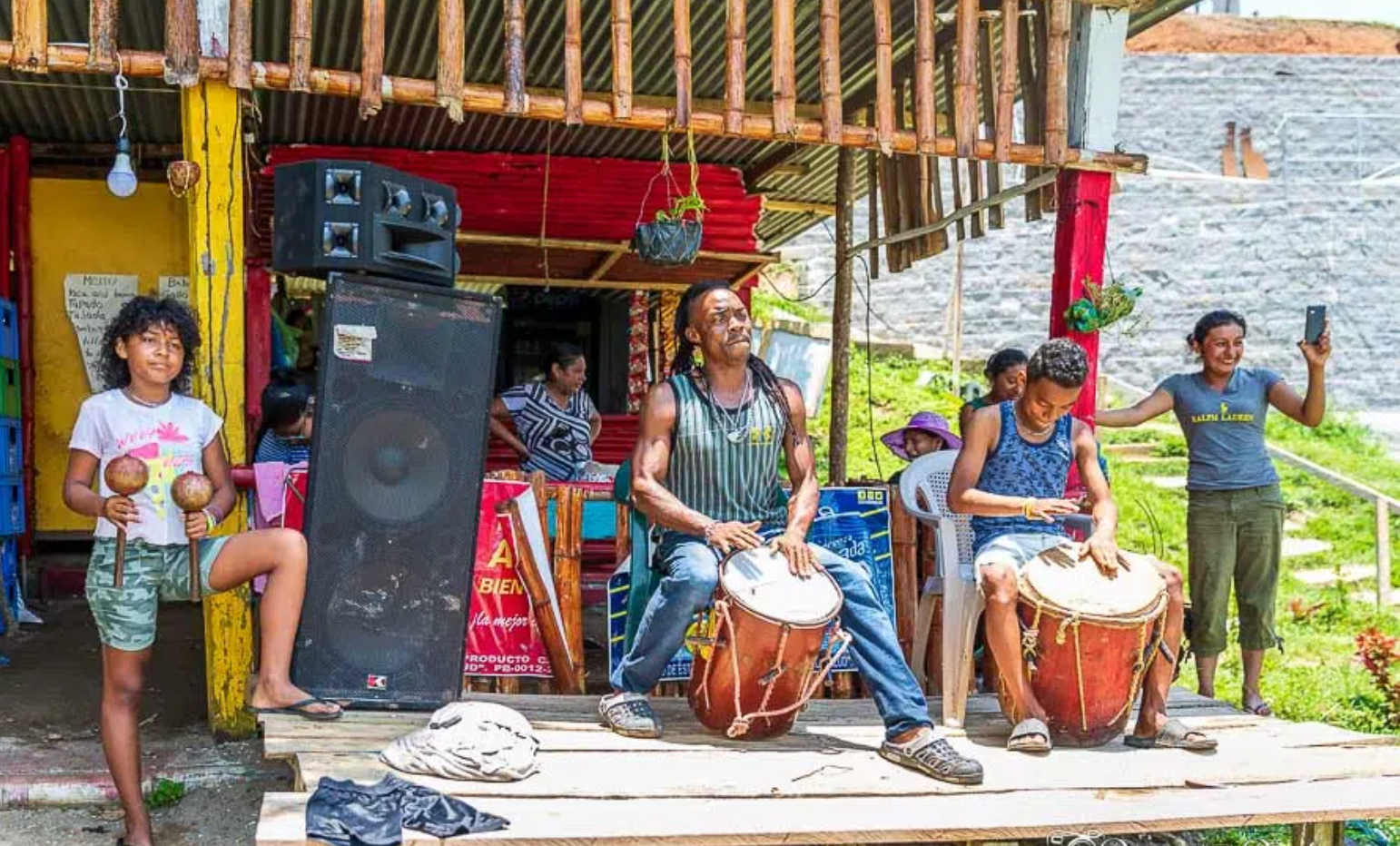
On the second day, explore the natural wonders of the area by venturing into the dense jungle of the surrounding El Boquerón National Park. Guided hikes through the park offer a chance to encounter diverse flora and fauna, including howler monkeys, exotic birds, and lush vegetation. Travelers can also visit the historic Castillo de San Felipe, a Spanish colonial fortress situated at the entrance of Lake Izabal, offering panoramic views and a glimpse into the region's colonial past.
As the 3-week journey draws to a close, backpackers can choose to return to Guatemala City for departure or extend their adventure by venturing into the neighboring tropical paradise of Belize.
Understanding the best time to visit Guatemala, considering factors such as weather patterns, festivals, and tourist influx, ensures that backpackers can optimize their travel experience and make the most of their journey.
Packing essentials for a trip to Guatemala, including lightweight clothing, sturdy footwear, insect repellent, and travel documents, ensures that backpackers are well-prepared for the country's diverse environments and activities. For more guidance read our guide "Guatemala Packing List Items for 2023 & What Clothes To Wear".
Chicken buses in Guatemala, also known as "camionetas" are the main form of public transportation in Guatemala, and how most locals move from place to place. They are retired school buses that travel down from the US and they're noisy, packed full of people, and take speed limits as mere suggestions. If you like adventure, the chicken bus will certainly provide you with a bit of it.
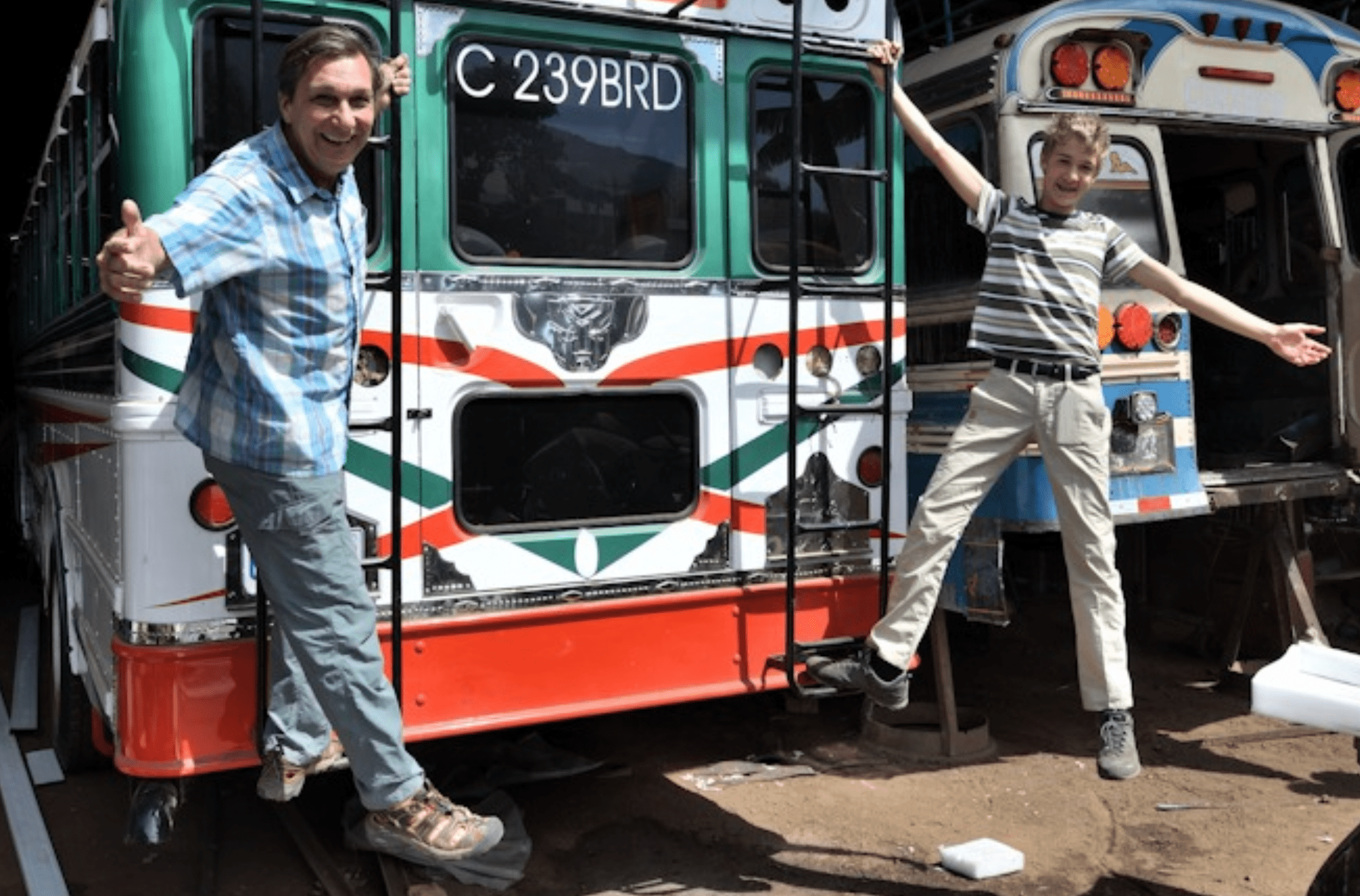
It's not recommended to travel long distances with lots of luggage on the chicken bus because there is often little room and they strap your bags up over the roof, which doesn't always feel the most secure.

If you get motion sickness, a chicken bus from Antigua to Lake Atitlan is absolutely NOT the choice for you. A direct chicken bus from Antigua to Lake Atitlán does not exist, so you will have to make several transfers along the way. You have to get off the chicken bus and look for your change in Los Encuentros and again in Sololá before arriving at your final destination of Panajachel.
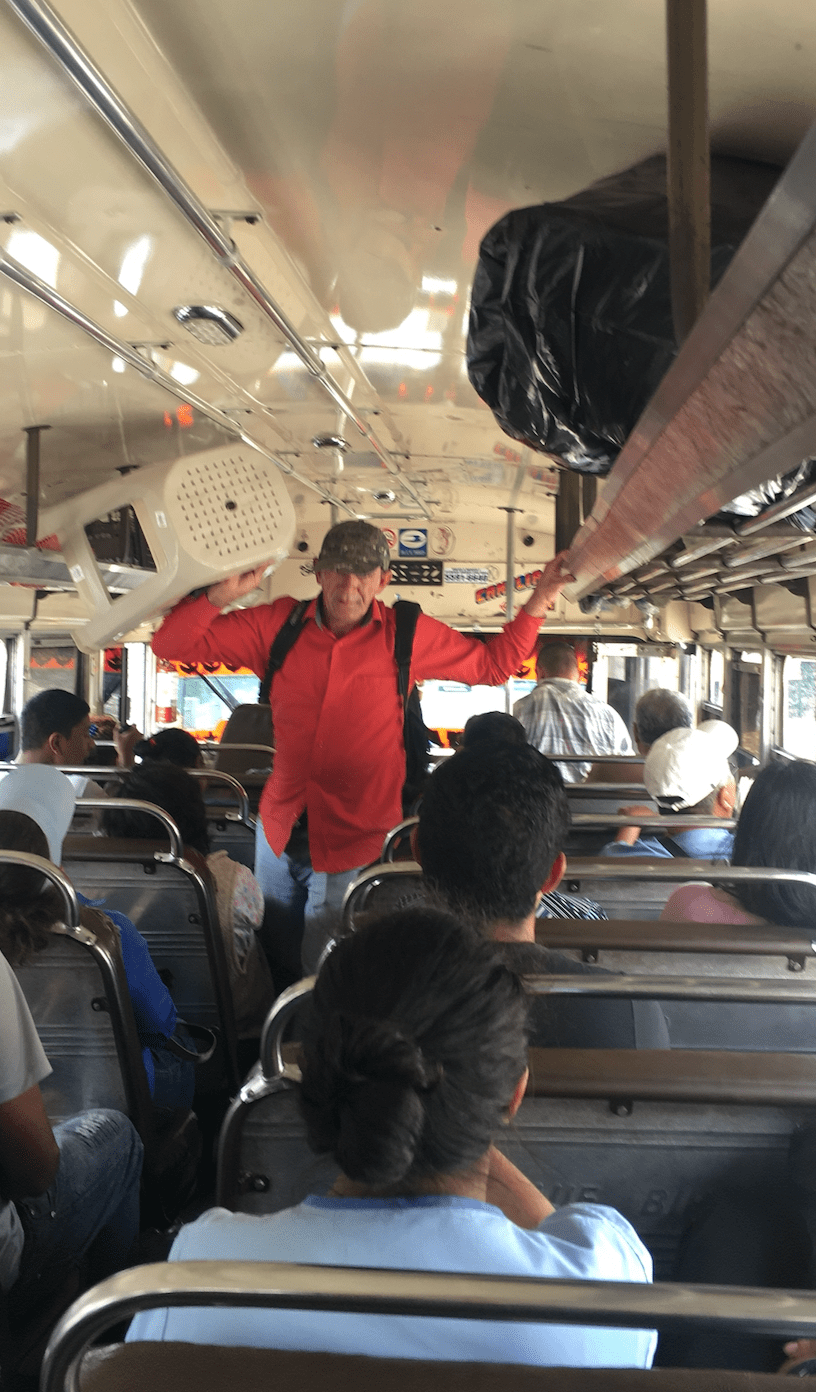
A very frugal backpacker could squeak by on $50 a day with a $15 budget for a shared dorm room, $20 for meals, and $15 for transfers between locations whilst on the go, and use the same $15 for admission fees or entertainment. However increasing a daily budget to $75 or more would provide more creature comforts and a private room.
Kayak Guatemala is Lake Atitlan’s #1 base camp for exploration and adventure, offering activities like epic volcano hikes, family kayak tours, cooking classes, and village-to-village boat and walking tours. We employ and upskill underprivileged local people, plus a portion of our profits goes towards an NGO that works hard to alleviate poverty in Lake Atitlan.
For more help with planning your trip to Lake Atitlan, check out our "Top Tours & Things To Do In Lake Atitlan" guide.
